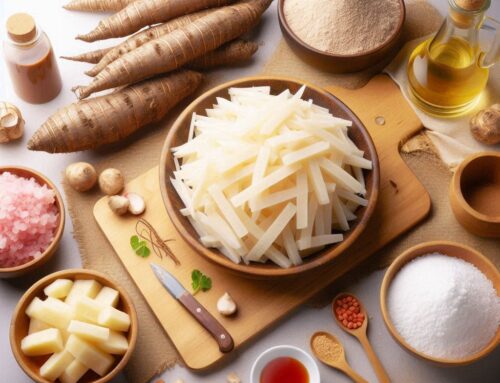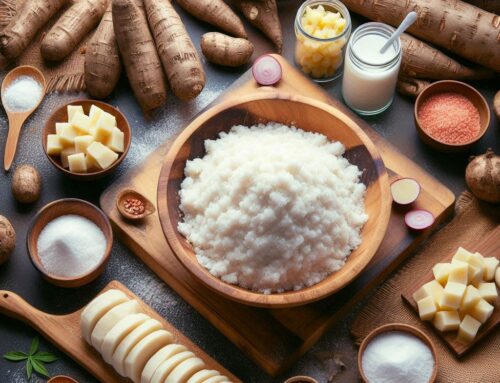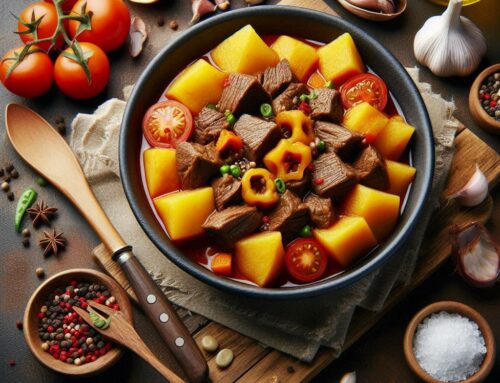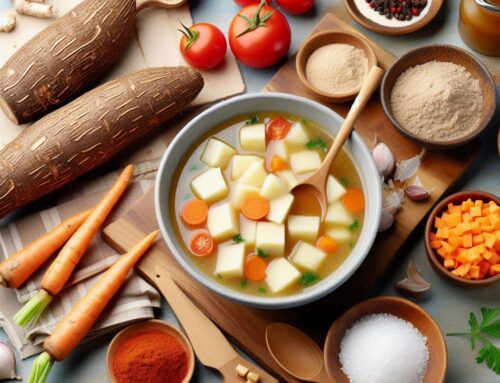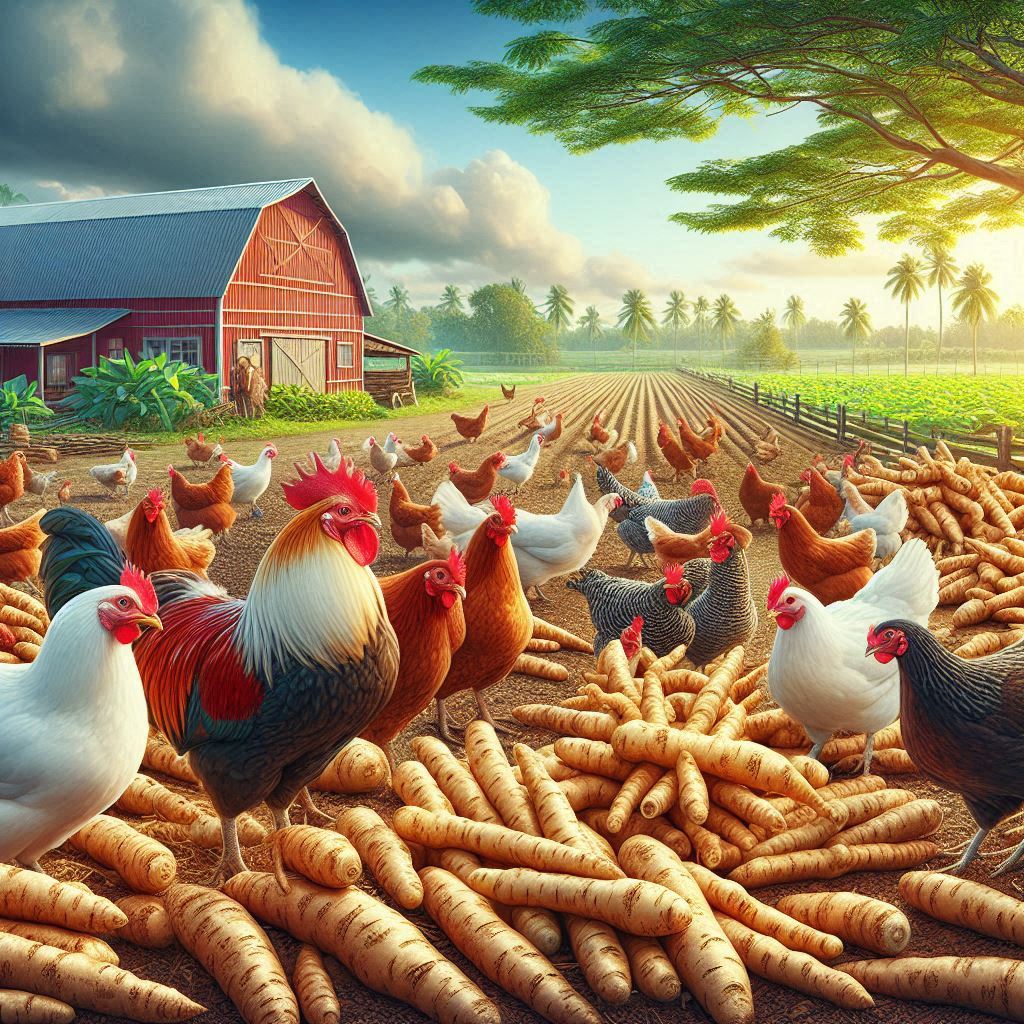
Introduction: Understanding the Nutritional Value of Cassava for Chickens
Cassava, a starchy root vegetable widely cultivated in tropical regions, is gaining attention as a potential component of poultry diets. Understanding its nutritional value is crucial for those considering its inclusion in chicken feed. Cassava offers several benefits that make it an attractive option for poultry nutrition.
Primarily, cassava is rich in carbohydrates, providing a significant energy source that can support the growth and development of chickens. This high energy content makes it an ideal substitute or supplement to traditional grains like corn. However, it’s important to balance cassava with other protein-rich ingredients to ensure a well-rounded diet.
In addition to its energy content, cassava contains essential vitamins and minerals that contribute to overall poultry health. These include vitamin C, calcium, and phosphorus—nutrients vital for bone development and immune function in chickens.
Despite these benefits, there are considerations when incorporating cassava into poultry diets. Raw cassava contains cyanogenic glycosides, which can be toxic if consumed in large quantities. Proper processing methods such as drying or boiling are necessary to reduce these compounds and make cassava safe for consumption by chickens.
Overall, when used correctly as part of a balanced diet, cassava can be an economical and nutritious ingredient for enhancing the dietary regimen of poultry while supporting sustainable farming practices.
The Potential Risks of Feeding Cassava to Chickens and How to Mitigate Them
Cassava is a widely cultivated crop that serves as a staple food in many parts of the world. However, when it comes to feeding cassava to chickens, there are potential risks that need to be carefully managed. One of the primary concerns is cassava toxicity due to the presence of cyanogenic glycosides, which can release cyanide—a toxic compound—when consumed.
To safely incorporate cassava into poultry diets, understanding and implementing safe feeding practices is essential. Firstly, it’s crucial to recognize that not all parts of the cassava plant pose equal risk. The roots contain higher levels of cyanide compared to leaves and therefore require more cautious preparation.
Preparing cassava safely involves several steps aimed at reducing its cyanide content. These include peeling the roots thoroughly, as most toxins are concentrated in the peel, and soaking them in water for several hours or even overnight. Fermentation and drying are also effective methods for detoxifying cassava before it is fed to chickens.
By adhering to these preparation techniques, farmers can mitigate the risks associated with feeding cassava to poultry while still taking advantage of its nutritional benefits as a carbohydrate source. Ensuring proper processing not only protects chicken health but also supports sustainable farming practices by utilizing locally available resources efficiently.
Step-by-Step Guide on Preparing Cassava for Your Chicken’s Consumption
Cassava is a versatile and energy-rich root vegetable, but when it comes to feeding it to your chickens, proper preparation is crucial to ensure their safety. Cassava contains natural toxins called cyanogenic glycosides, which can be harmful if not adequately removed. Here’s a step-by-step guide on preparing cassava for your chicken’s consumption:
- Selecting the Right Cassava: Choose fresh cassava roots that are firm and free from soft spots or mold. Both sweet and bitter varieties contain toxins, but bitter ones tend to have higher levels.
- Peeling the Cassava: Use a sharp knife or vegetable peeler to remove the thick outer skin of the cassava root completely. This step is essential as most of the toxins are concentrated in the peel.
- Chopping into Pieces: Cut the peeled cassava into small chunks or slices. Smaller pieces will cook more evenly and help in effectively removing toxins during cooking.
- Soaking in Water: Place the chopped cassava pieces in a large bowl of water for several hours, preferably overnight. Soaking helps leach out some of the water-soluble cyanide compounds.
- Boiling Thoroughly: Drain the soaked cassava and transfer it to a pot of fresh water. Bring it to a boil and cook for at least 30 minutes until tender. Boiling is an effective method for reducing toxin levels significantly.
- Draining and Cooling: Once cooked, drain off the boiling water completely and let the cassava cool down before serving it to your chickens.
- Feeding in Moderation: Introduce cooked cassava gradually into your chicken’s diet alongside other feeds to ensure they adapt well without any digestive issues.
By following these safe preparation methods, you can provide your chickens with nutritious meals while minimizing any risk associated with cyanogenic compounds found in raw cassava roots.
Incorporating Cassava into a Balanced Chicken Feed Plan
Incorporating cassava into a balanced chicken feed plan can be an effective strategy for enhancing dietary diversity in poultry. Cassava, a starchy root vegetable, is rich in carbohydrates and can serve as an energy-dense component of chicken feed. However, to ensure that chickens receive a well-rounded diet, it is crucial to mix cassava with other feed ingredients that provide essential proteins, vitamins, and minerals.
When formulating chicken feed with cassava, it’s important to consider the nutritional needs of poultry at different growth stages. Young chicks require higher protein levels for growth and development, so combining cassava with protein-rich feeds like soybean meal or fish meal can help meet these requirements. For adult chickens, maintaining a balance between energy sources and nutrients is key to sustaining health and productivity.
It’s also vital to process cassava properly before incorporating it into the feed. Raw cassava contains cyanogenic glycosides which can be toxic if consumed in large quantities. Ensuring proper drying or boiling of cassava helps eliminate these compounds, making it safe for consumption.
By thoughtfully mixing feeds for chickens and incorporating ingredients like processed cassava into their diet, poultry farmers can promote better health outcomes and enhance the overall efficiency of their feeding programs. This approach not only supports sustainable farming practices but also contributes to more resilient food systems by utilizing locally available resources effectively.
The Benefits of Moderation: How Much Cassava Should Be Included?
When it comes to incorporating cassava into chicken diets, moderation is key. Understanding the appropriate feeding guidelines for chickens is crucial to ensure their health and productivity. Cassava, a root vegetable rich in carbohydrates, can serve as an excellent energy source for chickens when used correctly. However, it’s important to be mindful of its cyanogenic glycosides content, which can be harmful in large quantities.
To safely include cassava in your chickens’ diet, consider proper portion sizes that complement their nutritional needs without overwhelming them. Experts suggest that cassava should not exceed 10-20% of the total feed intake. This ensures that chickens receive a balanced diet with adequate protein and essential nutrients from other feed components.
By adhering to these feeding guidelines for chickens and adjusting how much cassava you offer based on their specific requirements and growth stages, you can optimize their health benefits while minimizing any potential risks associated with overconsumption. Remember that every flock may have different needs, so it’s always wise to consult with a poultry nutritionist or veterinarian for tailored advice on integrating cassava into your chicken feeding regimen effectively.
Anecdotal Evidence and Research Findings on Cassiva as Poultry Feed
Cassava, a starchy root vegetable, has been gaining attention as a potential component in poultry feed. Research studies on poultry diets have explored the nutritional benefits and limitations of incorporating cassavas into these diets. The findings suggest that cassava can serve as an effective energy source due to its high carbohydrate content, which is essential for the growth and energy needs of poultry.
However, it’s important to note that cassavas must be processed correctly to reduce their cyanide content, which can be harmful if consumed in large quantities. Studies have shown that when properly treated and included at appropriate levels, cassava can replace traditional grains like maize without adversely affecting the growth performance or health of chickens.
In addition to scientific research, anecdotal evidence from farmers who have experimented with feeding chicks cassavas provides valuable insights. Many farmers report positive outcomes such as cost savings and satisfactory growth rates in their flocks when using cassava-based feeds. These practical experiences underscore the potential for integrating cassava into poultry diets as a sustainable alternative to more conventional feed ingredients.
As both research findings and farmer experiences continue to highlight the benefits of using cassavas in poultry feed, this approach may offer a viable solution for reducing feed costs while maintaining healthy flock development.
Conclusion: Enhance Your Poultry’s Health by Responsibly Integrating Cassavas into Their Diets
In conclusion, integrating cassavas into your poultry’s diet can be a beneficial strategy to enhance their overall health and productivity. As a rich source of carbohydrates, cassavas provide the necessary energy for growth and development. However, it is crucial to incorporate them responsibly to avoid potential pitfalls associated with improper use.
Firstly, ensure that the cassavas are properly processed before feeding them to your poultry. Raw cassavas contain cyanogenic glycosides, which can be toxic if consumed in large quantities. Proper processing methods such as peeling, drying, and cooking help eliminate these harmful compounds.
Additionally, balance is key when incorporating cassavas into poultry diets. While they are an excellent energy source, they should not replace essential proteins and vitamins found in other feed components. A well-rounded diet that includes grains, legumes, and supplements will ensure that your poultry receive all the necessary nutrients for optimal health.
Finally, monitor your flock’s response after introducing cassava-based feeds. Observe any changes in their behavior or health status and adjust their diet accordingly. By taking these responsible steps when integrating cassavas into your poultry’s diet, you can promote healthier flocks while potentially reducing feed costs—leading to more sustainable farming practices overall.



